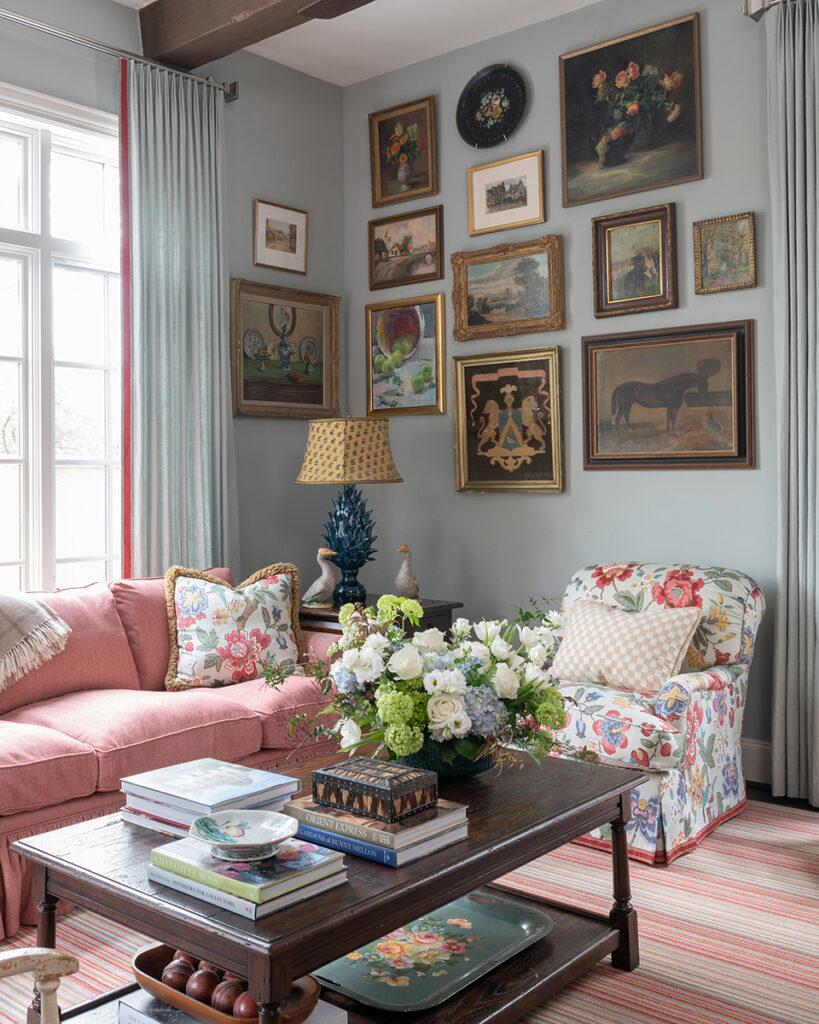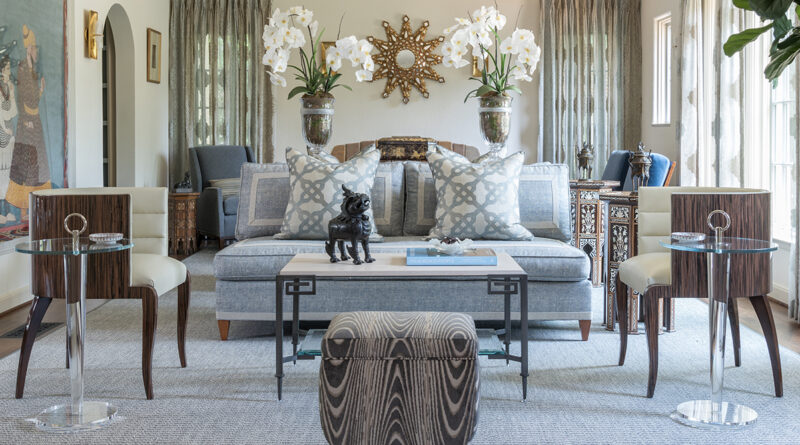Marrying Styles: How Newlyweds Can Design a Home They Both Love
I once met with a new couple who had just come to Dallas from California. The woman wanted a beach house (light, airy, and a little feminine), but the man wanted a home that looked like the bar at the Mansion on Turtle Creek: dark, rich, and very masculine.
Designing a beautiful living space for yourself is challenging enough. When you need to accommodate a significant other, it’s doubly difficult.
But don’t be discouraged if you and your partner like entirely different things. Even professional interior designers like myself rarely decorate a whole home in a single style.

Working with that couple from California, I suggested that they shop together for an interior design book they both liked. They eventually found a book with “beachy” homes and marked many pages to share with me for inspiration. I advise most couples moving in together for the first time to look through interior design books and magazines separately to see what catches their eye.
The next step is to look at each other’s selections to see where you agree on colors, styles, and art. Pick one main color and two accent colors together to build a complementary color palette. Having an intentional color scheme makes it easier to decide what stays in and what goes out.
Before purging anything, speak up if an item contains a lot of sentimental value for you, and encourage your partner to do the same. Kindness and compromise are key to the process. When helping my clients, I pick the best pieces from everything they own rather than trying to use all they have. Leaving “breathing room” around your furnishings and art will make the mixing and matching feel intentional rather than chaotic.
Identify different rooms that can belong to just you or just your partner. For example, maybe one of you wants a man cave, a craft room, or a home office. These spaces should reflect the preferences of the person who will spend the most time in them.
Merging styles with your partner becomes easier when you have a shared vision you can both get excited about. However, bringing in an interior designer could also save you hours of discussion (and possibly prevent arguments). When I work with couples and families, it’s important to me that everyone who lives in the home is happy and sees themselves reflected in the space.









